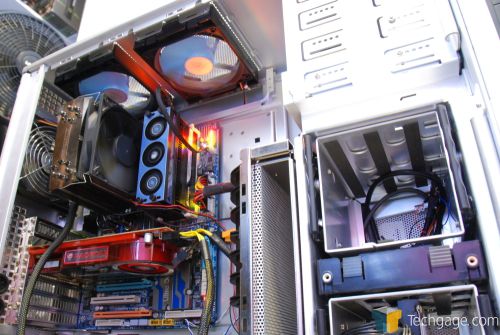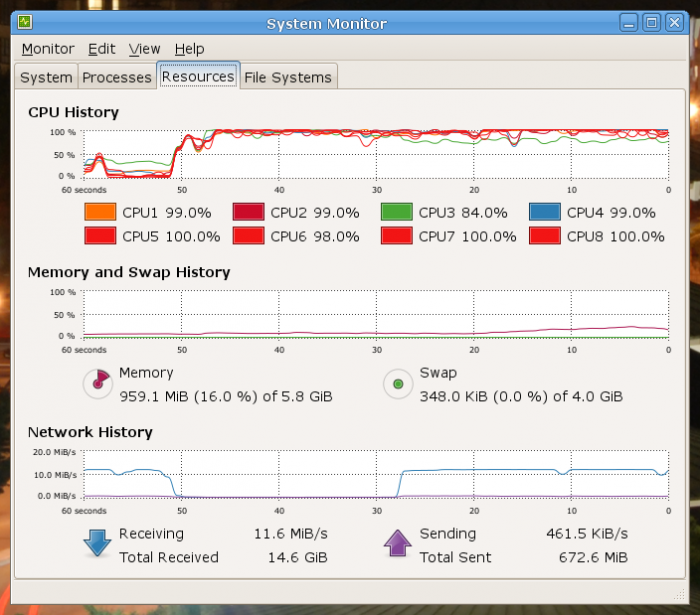Hi all:
As you're probably all aware by now, we're in the midst of upgrading all of our various methodologies on the website, and now that our graphics card test suite is all sorted out, it's time to tackle the next one: processors.
For the most part, we've been using the exact same base for our CPU test suite for close to two years, with some minor alterations along the way. There are a few tests listed here I'm ready to drop, and a whole lot more I'd like to add, so as always, please don't hesitate to drop your two cents in... I really appreciate any comments/suggestions.
Our current test suite looks like this:
That said, I have an idea for what we can replace SYSmark with, but I can't talk about it right now, and I'm not even sure we'll be going ahead with it. Once I know more and look at it from all angles, I'll let you guys know.
Other benchmarks that could go? For the most part, I hate to chuck some of these, because they all serve a purpose. So rather than do that, I think I'd prefer to just add more, to give an even more comprehensive overview of a CPU's performance. I would likely drop ProShow Gold, since it heavily favors Intel (due to SSE4 support). I'd love to introduce another video encoder tool, to pair up with our TMPGEnc Xpress results, but I'm not sure off-hand what should be used.
SPEC's CPU2006 is another I'm dying to get in there (thanks to Psi* for the idea).
Audio encoding is another option, since dBpoweramp can convert up to four songs at a time.
For gaming, I'd like to retain 3DMark Vantage, but other than that, I'm not quite sure. Intel has given me a list of multi-threaded games, and we happen to have most of them here, so I'm going to test each one and track the CPU core usage and see which should be used. This would be in addition to World in Conflict... since there seems to be a fair amount of demand for that one.
To keep this short, I'll stop here. Once again, please don't hesitate to offer up opinions. We slave over our content for you guys, so we want to make sure we're delivering the best possible reviews and articles out there.
As you're probably all aware by now, we're in the midst of upgrading all of our various methodologies on the website, and now that our graphics card test suite is all sorted out, it's time to tackle the next one: processors.
For the most part, we've been using the exact same base for our CPU test suite for close to two years, with some minor alterations along the way. There are a few tests listed here I'm ready to drop, and a whole lot more I'd like to add, so as always, please don't hesitate to drop your two cents in... I really appreciate any comments/suggestions.
Our current test suite looks like this:
SYSmark 2007 Preview
Workstation
Autodesk 3ds Max 2009
Cinebench 10
POV-Ray 3.7
Multi-Media
Adobe Lightroom 2
TMPGEnc Xpress 4.7
ProShow Gold 3.2
Sandra 2009 Multi-Media
Mathematics
Sandra 2009 Arithmetic
Sandra 2009 Cryptography
Microsoft Excel 2007
System Specific
Sandra 2009 Memory
Sandra 2009 Multi-Core Efficiency
Gaming
Call of Duty: World at War
Half-Life 2: Episode Two
Crysis Warhead
3DMark Vantage
The first thing I want to drop is SYSmark 2007, because I find it rather useless. The results it delivers don't scale as they really should, so it's a bit misleading. I think it's obvious that a Q9650 is far more powerful than an E8600, but SYSmark doesn't tell us that. Plus, running the suite is a very patience-testing process. Not to mention, it requires a completely fresh install of Windows. That all on top of the fact that running it twice in a row, even with two iterations, could give differing results, and when we're dealing with results that range between 1 - 250-ish, any variance can screw up the true scaling.Workstation
Autodesk 3ds Max 2009
Cinebench 10
POV-Ray 3.7
Multi-Media
Adobe Lightroom 2
TMPGEnc Xpress 4.7
ProShow Gold 3.2
Sandra 2009 Multi-Media
Mathematics
Sandra 2009 Arithmetic
Sandra 2009 Cryptography
Microsoft Excel 2007
System Specific
Sandra 2009 Memory
Sandra 2009 Multi-Core Efficiency
Gaming
Call of Duty: World at War
Half-Life 2: Episode Two
Crysis Warhead
3DMark Vantage
That said, I have an idea for what we can replace SYSmark with, but I can't talk about it right now, and I'm not even sure we'll be going ahead with it. Once I know more and look at it from all angles, I'll let you guys know.
Other benchmarks that could go? For the most part, I hate to chuck some of these, because they all serve a purpose. So rather than do that, I think I'd prefer to just add more, to give an even more comprehensive overview of a CPU's performance. I would likely drop ProShow Gold, since it heavily favors Intel (due to SSE4 support). I'd love to introduce another video encoder tool, to pair up with our TMPGEnc Xpress results, but I'm not sure off-hand what should be used.
SPEC's CPU2006 is another I'm dying to get in there (thanks to Psi* for the idea).
Audio encoding is another option, since dBpoweramp can convert up to four songs at a time.
For gaming, I'd like to retain 3DMark Vantage, but other than that, I'm not quite sure. Intel has given me a list of multi-threaded games, and we happen to have most of them here, so I'm going to test each one and track the CPU core usage and see which should be used. This would be in addition to World in Conflict... since there seems to be a fair amount of demand for that one.
To keep this short, I'll stop here. Once again, please don't hesitate to offer up opinions. We slave over our content for you guys, so we want to make sure we're delivering the best possible reviews and articles out there.


